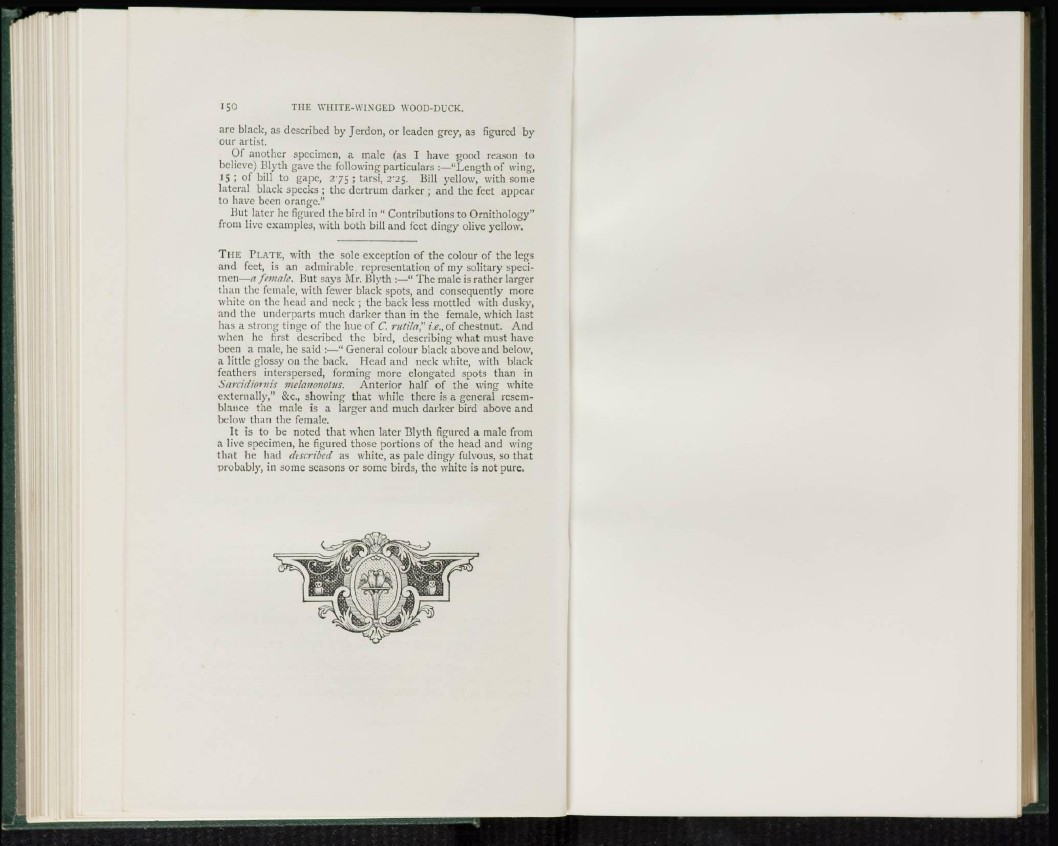
150 THE WHITE-WINGED WOOD-DUCK.
are black, as described by Jcrdon, or leaden grey, as figured by
our artist.
Of another specimen, a male (as I have good reason to
believe) Blyth gave the following particulars :—"Length of wing,
1 5 ; of bill to gape, 2 7 5 ; tarsi, 2'2$. Bill yellow, with some
lateral black specks ; the dcrtrum darker ; and the feet appear
to have been orange."
But later he figured the bird in " Contributions to Ornithology"
from live examples, with both bill and feet dingy olive yellow.
THE PLATE, with the sole exception of the colour of the legs
and feet, is an admirable representation of my solitary specimen—
a female. But says Mr. Blyth :—" The male is rather larger
than the female, with fewer black spots, and consequently more
white on the head and neck ; the back less mottled with dusky,
and the underparts much darker than in the female, which last
has a strong tinge of the hue of C. rutila" i.e.,of chestnut. And
when he first described the bird, describing what must have
been a male, he said :—" General colour black above and below,
a little glossy on the back. Head and neck white, with black
feathers interspersed, forming more elongated spots than in
Sarcidiornis melanonotns. Anterior half of the wing white
externally," &c, showing that while there is a general resemblance
the male is a larger and much darker bird above and
below than the female.
It is to be noted that when later Blyth figured a male from
a live specimen, he figured those portions of the head and wing
that he had described as white, as pale dingy fulvous, so that
probably, in some seasons or some birds, the white is not pure.